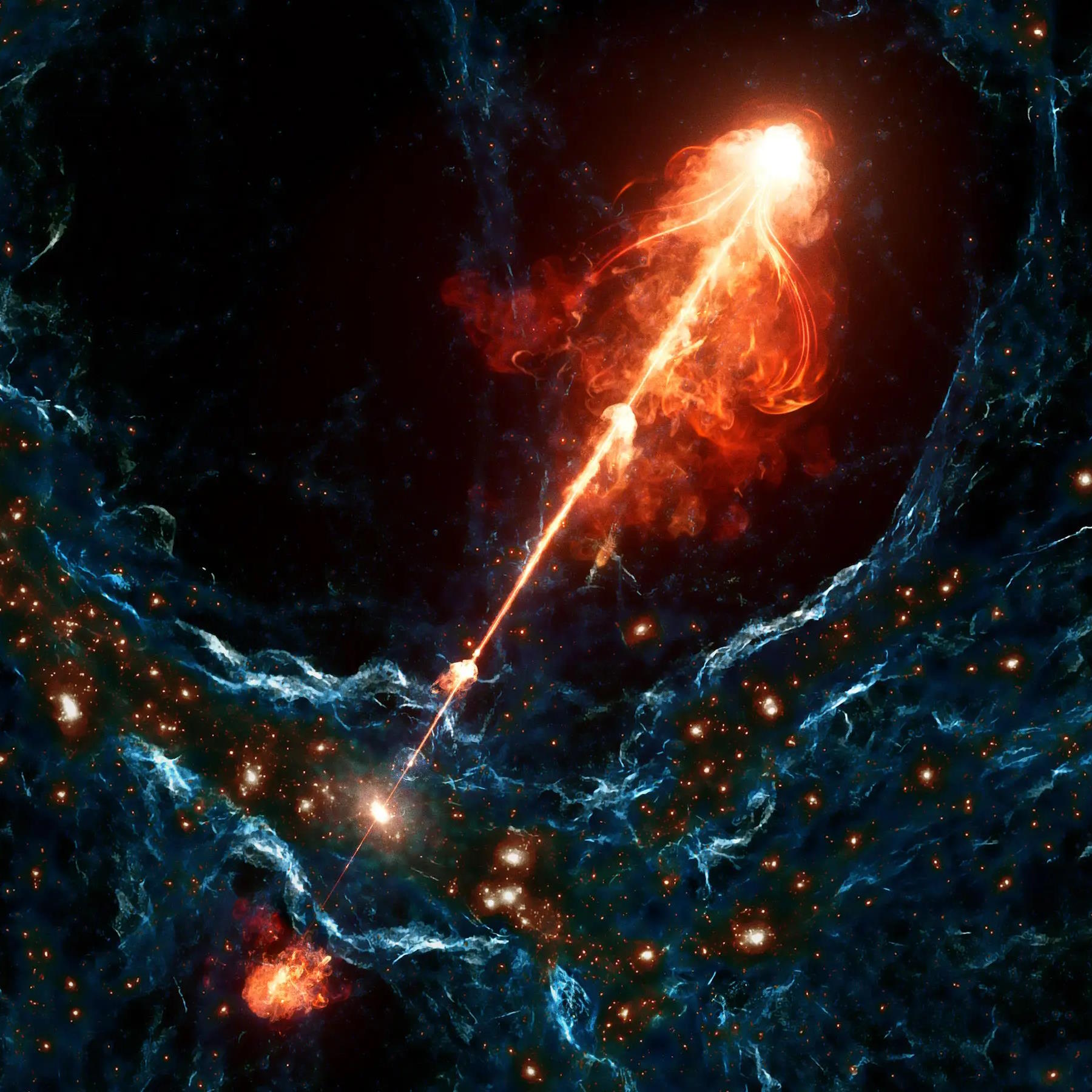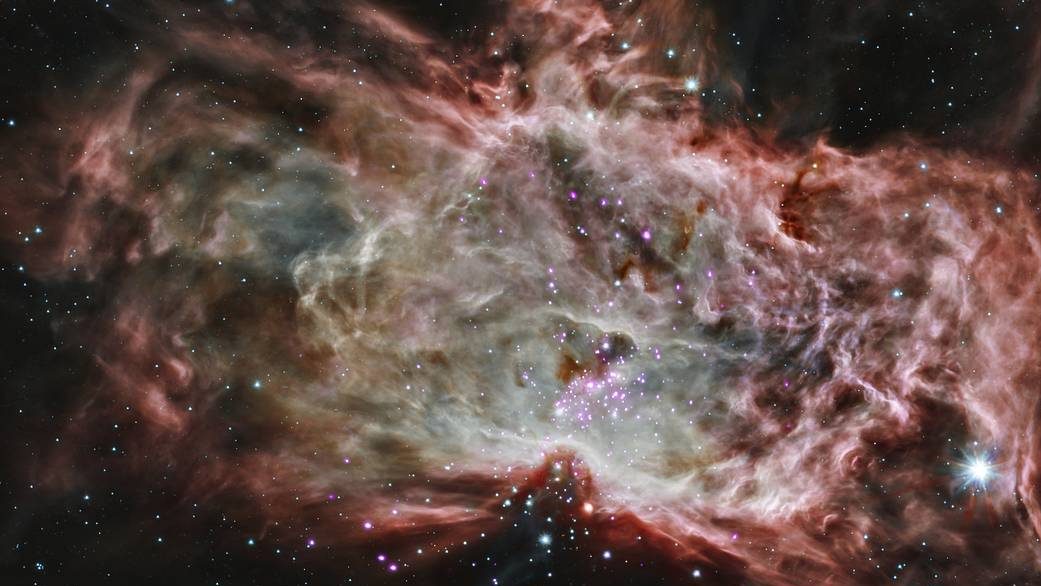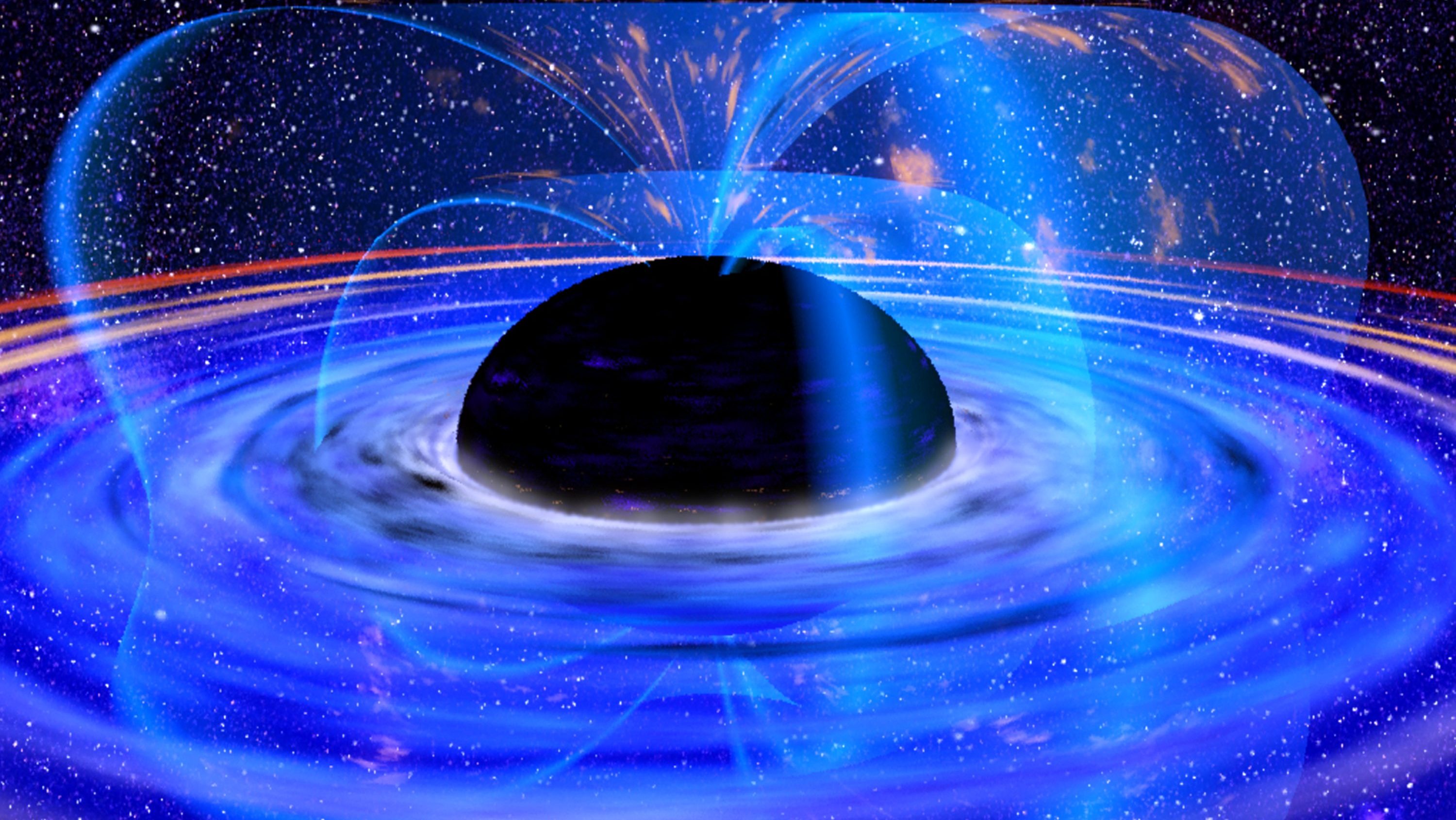Starts With A Bang podcast #111 – Black hole jets

- Since the 1970s, we’ve known that black holes, when they’re active, can produce large, collimated jets that extend far beyond the host galaxy where they reside.
- These black hole jets can be seen across wavelengths, from X-ray to the optical and all the way into the radio, but none had ever exceeded ~17 million light-years or so, until now.
- Meet Porphyrion, the longest, strongest black hole jet ever discovered, at 23-24 million light-years in length. Listen to its discoverer, Martijn Oei, tell us about it, and what it means, here.
In this Universe, there are a few objects that are just larger, and a few events that are just more powerful, than others. As far as size goes, the cosmic web creates some of the largest features ever discovered, with the largest galaxy filaments and the largest regions devoid of galaxies spanning as much as ~2 billion light-years. No robust, verified structure has ever been found that’s larger. Meanwhile, as far as energy and power go, collisions of galaxy clusters are the most energetic events, outstripped only by the Big Bang itself.
However, nearly rivaling galaxy cluster collisions are the strongest black hole jets ever seen, capable of emitting trillions of times the energy of a Sun-like star, but also capable of sustaining those energies over timescales of a billion years or more. Astronomers have just set a new record for the longest black hole jet with the discovery of Porphyrion, which spans a whopping 24 million light-years across! How did this jet and others like it come to be, and what effects do they have on the larger Universe, and how do they get generated from such physically small objects (i.e., black holes) to begin with?
That’s the subject of the latest edition of the Starts With A Bang podcast, featuring Dr. Martijn Oei: the discoverer of Porphyrion himself! We get deep into the physics and astrophysics of black holes and their jets, which have profound implications for how structures get carved and magnetized onto the scales of the cosmic web itself. Buckle up and tune in; it’s a wild ride ahead!





